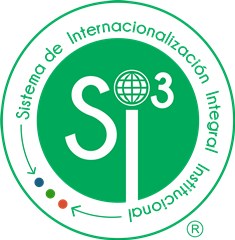

General Recommendations
Each university addresses the comprehensive internationalization work differently, but the ingredients that we have found will lead to success based on the experience of several universities are the following (cf. Engberg, D., & Green, M., 2002):
• Creating statements of mission, vision and values reflecting internationalization as a priority;
• Receiving explicit support of the Board of Trustees or Directors (in writing, for the whole institutional community);
• Enjoying continued support of senior management;
• Vowing a strong commitment to meet the needs of students;
• Starting an intentional process towards institutional comprehensive internationalization in a systematic, comprehensive, and strategic manner;
• Forming a strategic plan for institutional comprehensive internationalization;
• Creating a formal Internationalization Steering Committee, with Board and senior management participation, representing the entire institution to formulate an internationalization strategic plan.
Before formulating the strategic plan, we highly recommend carrying out Si3´s institution and community diagnostics.
We also recommend creating a Comprehenisve Internationalization Baseline based on the "Framework for Comprehensive Internationalization- FCI" created by Community Colleges for International Development, Inc. (see video below)
Download the FCI Instrument here
Note: This instrument does not cover the category "Internationalization of Research"
Forming an Internationalization Team/Committee
Board members and senior management should be involved in this committee, but members of the institution at all levels and across all sectors should also belong in order to create an accepted and implementable plan.
It is recommended that the committee be chaired by someone with leadership and seniority in the institution and with 100% backing by senior management. When the plan has been finalized and implemented, the board and senior management should speak as one voice about the reasons and goals included in the plan.
Committee Meetings
Defining concepts is very important. The committee should work together to determine the definitions of the concepts related to internationalization work. It is important to have an institutional definition for the following concepts, among others: Comprehensive Internationalization, Global Education, Global Learning, Global Competencies, Internationalized Curriculum, Internationalized Course.
During the meetings, in addition to the diagnostic results, the following data should also be taken into consideration: current hard data regarding human and financial resources, professional development, teacher roles, study abroad, international students, campus committees, external environments, as well as policies and procedures towards internationalization.
It is also advisable to make a review of the whole curriculum to know the extent to which current curricula are internationalized (Curriculum Inventory).
Prioritize strategic objectives with projects, programs and/or actions with indicators, timing and responsible individuals.
The plan will use, as a basis, successful existing programs and new initiatives and strategic objectives for the next few years (5-8 years old) that align with the mission, vision and values of the institution and maximize resources. For this task, having an institutional internationalization baseline, based on Community Colleges for International Development’s Framework for Comprehensive Internationalization®, is instrumental.
During the formulation of the plan, it is very important to have constant communication with senior management and the Board.
Suggested Committee Topics
-
Institutional Comprehensive Internationalization
-
How to integrate an international and intercultural dimension into the substantive areas of the institution
-
-
Internationalizing the Curriculum
-
Decide on how to infuse international and intercultural or global dimensions into the curriculum. Global Competencies: Which ones? How do you measure them? How do you evaluate teacher performance, including the development of global competencies in students?
-
-
Extra-curricular and Outreach Activities
-
Making sure they have international and intercultural dimensions
-
How to create a culture and image of the campus focusing on internationalization and interculturality
-
-
Communication
-
Improve internal communication and marketing strategies for internationalization (using both traditional and electronic means)
-
Internal marketing opportunities for national and international mobility
-
-
Recognizing global competencies
-
How are these competencies measured throughout academic programs? What are the requirements and procedures to achieve them? Are they reported on transcripts? Which department is responsible?
-
-
Foreign Languages
-
Offer more foreign languages for both the internal and external community according to the expressed needs in the diagnostics
-
Strengthening the teaching and learning of key foreign languages and the foreign language proficiency certification of staff and students
-
-
International Student Recruitment
-
Strategy to attract foreign students (programs for foreigners with links to the cultural wealth of the region, for example)
-
-
Resources & Funding
-
Resources and structures that support institutional comprehensive internationalization
-
Consider the feasibility of creating a foundation of the institution to better support and fund internationalization and intercultural activities, and even jobs, on campus
-
-
Professional Development
-
Continuous training in internationalization and multiculturalism for faculty and staff
-
Strategies to raise levels of international and intercultural skills into management, faculty, and administrative staff
-
Consider each member of the staff of the institution as both national and international “liaisons" responsible for internationalizing and bringing interculturality to the campus.
-
Recommended Resources
American Council on Education (ACE). (2012). Mapping internationalization on U.S. campuses: 2012 edition. Recuperado el 23 de abril 2014 de http://www.acenet.edu/news-room/Documents/Mapping-Internationalizationon-US-Campuses-2012-full.pdf
British Council. (2013). Culture at Work, The value of intercultural skills in the workplace. UK: British Council. Recuperado el 15 de abril de 2014 de https://www.britishcouncil.org/sites/default/files/culture-at-work-report-v2.pdf
CUMEX. (2011). Manual de indicadores de internacionalización de la educación superior: marco conceptual y diagnóstico del proceso de internacionalización en las IES del CUMEX. México: Consorcio de Universidades Mexicanas. Recuperado el 15 de abril de 2014 de http://www.cumex.org.mx/pdf/MANUAL_INDICADORES.PDF
De Wit, H. (2011). Trends, Issues and Challenges in Internationalization of Higher Education. Amsterdam: Centre for Applied Research on Economics and Management, Hogeschool van Amsterdam. Recuperado el 15 de abril de 2014 de http://www.yieldopedia.com/paneladmin/reports/49f924b8e497fc0b88e9893772eccd4c.pdf
Engberg, D., & Green, M. F. (2002). Promising practices: Spotlighting excellence in comprehensive internationalization. Washington, DC: American Council on Education. p. 10-11 Recuperado el 15 de abril de 2004 de http://files.eric.ed.gov/fulltext/ED475088.pdf
Gacel Ávila, J. (2000). La dimensión Internacional de las Universidades Mexicanas. Revista de la Educación Superior. ANUIES. 29(115). Recuperado de http://publicaciones.anuies.mx/revista/115/2/3/es/la-dimension-internacional-de-las-universidades-mexicanas
Gacel Ávila, J. (2014). Internacionalización comprehensiva en América Latina y el Caribe. Hamburgo: Fundación Unión Europea-América Latina y el Caribe (Fundación EU-LAC). Recuperado de http://eulacfoundation.org/es/documentos/internacionalizaci%C3%B3n-comprehensiva-en-am%C3%A9rica-latina-y-el-caribe-jocelyne-gacel-%C3%A1vila
Hudzik, J. (2011). Comprehensive internationalization. From concept to action. Washington, DC: Asociation of International Educators (NAFSA) Recuperado el 15 de abril de 2014 de https://www.nafsa.org/uploadedFiles/NAFSA_Home/Resource_Library_Assets/Publications_Library/2011_Comprehen_Internationalization.pdf
Knight, J. (1999). Internationalisation of higher education. En Quality and Internationalisation in Higher Education, París: OECD. Recuperado de http://www.keepeek.com/Digital-Asset-Management/oecd/education/quality-and-internationalisation-in-higher-education_9789264173361-en
Knight. J. (2005). An Internationalization Model: Responding to New Realities and Challenges. En De Wit,H., Jaramillo, I., Gacel-Avila, J. & Knight, J. (Ed.), Higher Education in Latin America, The international dimension(pp. 1-38). Washington, DC: The World Bank. doi: 10.1596/978-0-8213-6209-9 http://www.umt.edu/ilab/documents/Handbook_Advancing%20Comprehensive%20Internationalization.pdf
Leask, B. (2009). Internationalisation of the curriculum in action across disciplines-theoretical and practical perspectives. En Murdoch University 2012 Symposium: Embedding Internationalisation of the Curriculum. Recuperado de http://embeddingioc.weebly.com/uploads/1/3/2/6/13267518/betty_leask.pdf
NAFSA. (2011). Comprehensive Internationalization From Concept to Action. NAFSA: Association of International Educators. Washington, D.C. Recuperado de www.nafsa.org/_/File/_/comprehensive_izn_spanish.pdf
OECD. (2005). The definition and selection of key competencies, Executive Summary. Switzerland: The Organisation for Economic Co-operation and Development (OECD) DeSeCo Project. Recuperado el 15 de abril de 2014 de https://www.oecd.org/pisa/35070367.pdf
Olson, C, Green. M, & Hill, B. (2006). A handbook for advancing comprehensive internationalization: What institutions can do and what students should learn. Washington, DC: American Council on Education. p. VII. Recuperado el 15 de abril de 2014 de http://www.umt.edu/ilab/documents/Handbook_Advancing%20Comprehensive%20Internationalization.pdf
Quint-Rapoport, M. (2006). The NGO-ization of community colleges: One (more) manifestation of globalization. College Quarterly, 9 (Winter, 1). Recuperado el 23 de abril 2014 de http://files.eric.ed.gov/fulltext/EJ835398.pdf
The Association of American Colleges and Universities (AACU).(2013) It takes more than a major: Employer Priorities for College Learning and Student Success. An Online Survey Among Employers Conducted On Behalf Of: The Association Of American Colleges And Universities by Hart Research Associates. Washington DC: AACU-Hart Research Associates. Recuperado el 15 de abril de 2014 de http://www.aacu.org/leap/documents/2013_EmployerSurvey.pdf
The World Bank. (2005). Higher Education in Latin America, The international dimension. De Wit, H. et al.(Ed.) Washington, DC: The World Bank. doi: 10.1596/978-0-8213-6209-9
Tunnerman, C. (2011). La educación superior frente a los desafíos contemporáneos. Lección Inaugural del Año Académico 2011. Universidad Centroamericana. Managua, Nicaragua. Recuperado de http://www.bdigital.unal.edu.co/7457/1/carlostunnermannbernheim.20111.pdf.
UNESCO. (1998). Declaración Mundial sobre la Educación Superior en el siglo XXI: Visión y Acción. Recuperado el 3 de diciembre de 2013, de http://www.unesco.org/education/educprog/wche/declaration_spa.htm
UNESCO. (2009). Conferencia Mundial sobre la Educación Superior 2009: La nueva dinámica de la educación superior y la investigación para el cambio social y el desarrollo. Recuperado el 5 de diciembre de 2013, de http://www.unesco.org/education/WCHE2009/comunicado_es.pdf

